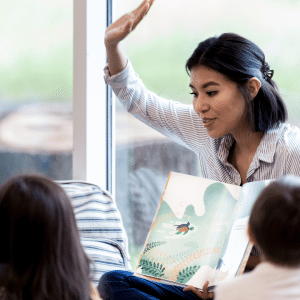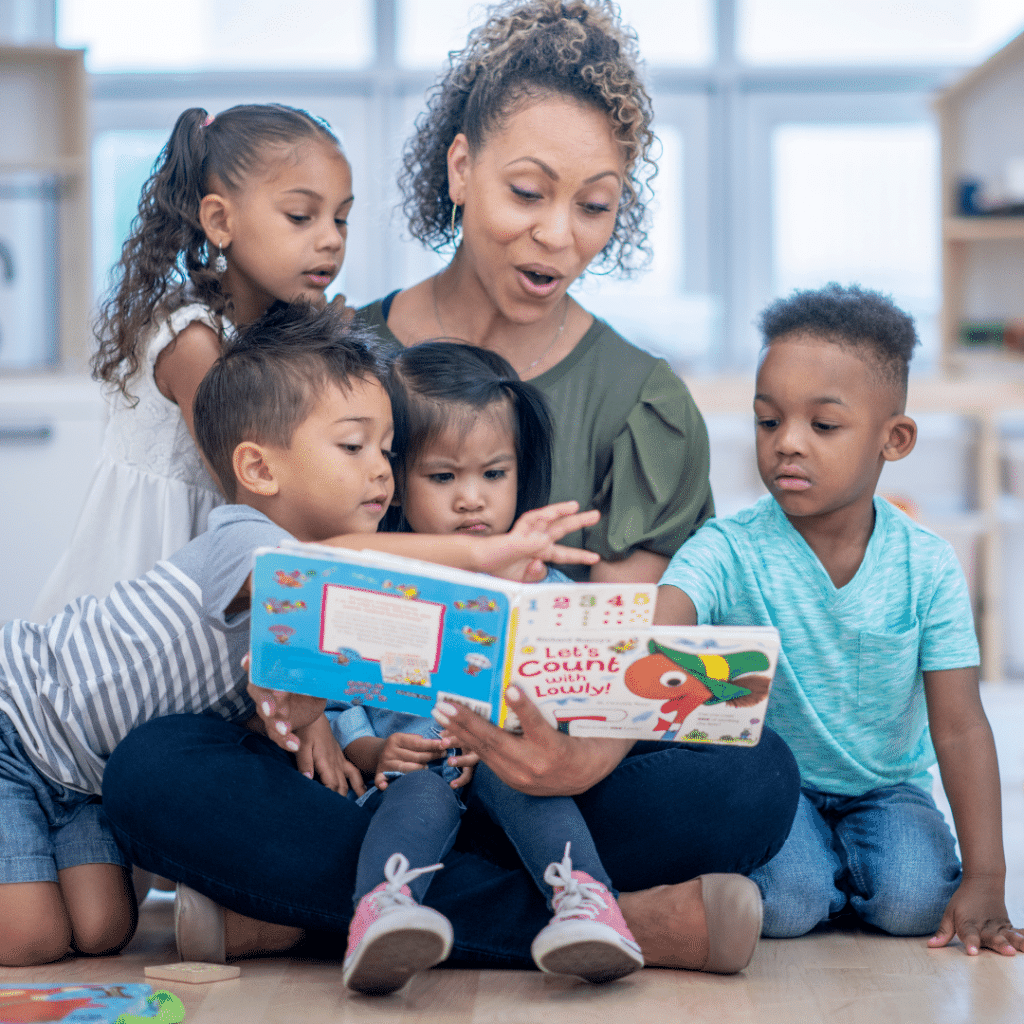Written By: Jacqueline Croke, M.S., CCC-SLP
From the time toddlers enter preschool, books are an essential aspect of learning. Toddlers are typically introduced to “big books” before three to four years old. Big books are enlarged versions of texts that allow educators to implement shared reading. Children learn about literacy by seeing and hearing reading in their everyday lives (i.e. bedtime stories) in much the same way they learn to talk. Shared reading is a way for teachers and caregivers to model reading.

What is shared reading?
- The teacher orients the children to the text
- The teacher reads the text using a pointer to help children track the print while reading
- During the reading, the teacher engages the children through the use of “I wonder” and open ended questions
- Over several days the teacher and the children reread the text
- Children become independent readers of the text
What is dialogic reading?
Dialogic reading is a form of shared reading in which specific types of prompts are used to engage the child in becoming the storyteller. The adult’s role is to prompt the child with questions, expand the child’s verbalization, and praise the child’s efforts to tell the story and label objects within the book.
How do you implement dialogic reading?
- Ask “what” questions
- Follow answers with questions
- Repeat what the child says
- Help the child as needed
- Praise and encourage
- Follow the child’s interests
- Have fun!

Positive effects of shared reading
- Studies have found that when children become active participants in the reading experience, children show greater language gains than when they are passive listeners during book reading
- Studies have also found a link between early experiences with shared picture book reading and later language and literacy skills
- There was a significant increase in the vocabulary of children who were read interactively versus traditional book reading activities
- Shared picture book reading results in enhancing preschoolers’ vocabulary and narrative skills
- Print and phonemic awareness are among the early literacy skills affected by interactive book reading
On Reading Books to Children: Parents and Teachers. N.p., Taylor & Francis, 2003.


0 Comments